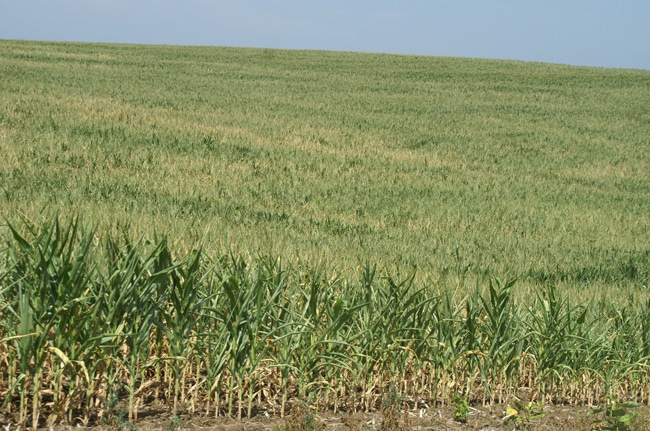December 5, 2012

Consumers appear to be better educated about the impact of the 2012 drought on crop yields and livestock numbers and are taking actions to try to lessen the pain of the weather-related food price increases, a food industry expert says.
“You probably have the best educated consumer right now about the issues and food price increases,” says Andrew Harig, director of government relations, Food Marketing Institute. “If you go on media websites, including even small town newspapers, you’ll see they’ve done dozens and dozens of articles on the drought from April on.
“So you have a consumer who is a little bit frightened of what’s going to happen and is expecting to see big changes,” said Harig, a participant in the Penton Media webinar “What’s Ahead: Gauging the Drought’s Impact Into 2013” that was held on Thursday Nov. 29.
One of the lessons learned in 2008, when the runup in food prices was higher than it has been in 2012, was that consumers “want to feel like a partner with their retailer, and I think it applies to restaurants, to know what’s going on,” Harig notes. “We’ve worked hard as an industry and as an association to make sure consumers do understand why they’re going to see increases.”
Retailers are also locking in prices on staples to try to lessen the impact and stepping up the use of social media for coupons and price deals and increasing fuel reward programs. “I think we saw in 2008 that fuel prices and food prices often operate in tandem so retailers are making more use of these programs.”
Harig was joined by Corrine Alexander, an agricultural economist with Purdue University, and John Barone, president of Market Vision Inc. The webinar was presented by Penton’s Corn and Soybean Digest, SuperMarket News and National Restaurant News.
Climbing corn prices have led protein producers to use 10 percent less feed, said Alexander. Farmers have been raising fewer animals, bringing lighter-weight animals to slaughter and finding different feed sources such as imported corn, barley and even expired Oreo cookies.
If there is a good corn crop next year, Alexander expects expanded chicken production by late 2013, pork in the second half of 2014 and cattle production in 2016. More protein production would bring down wholesale prices.
“How much [corn] we grow next summer is absolutely essential,” said Alexander.
Harig said the impact of agriculture performance on retail prices depends on the food product.
Commodity prices make up 10% of bread’s retail cost, but 50% of beef’s retail price.
Prices were already heading up before the drought, Harig said, pointing to consistent overall food inflation due to a growing global demand, fuel prices, biofuel production and climate change.
Harig’s FMI found that the recession has encouraged 55 percent of customers — even those with high-incomes — to plan” to live with less” in the future.
“So you’ve had this upward pressure, and unfortunately in 2008, you had consumers really battered by the recession.”
Due to a smaller variety of products offered in restaurants than in supermarkets, John Barone, president of Market Vision, said protein price spikes are going to impact the restaurant industry more. For example, the popularity of burger joints will cause ground beef increases to do more damage.
“On the restaurant industry side, I think 2013 is going to be a difficult year.”
To see the webinar, click on http://event.on24.com/r.htm?e=544157&s=1&k=1992352F86C743E26A33C54918788CAE
You May Also Like




